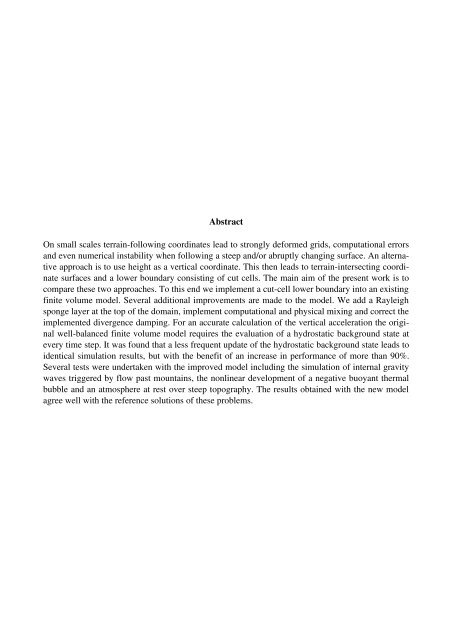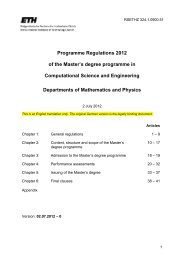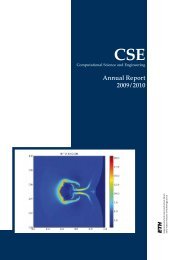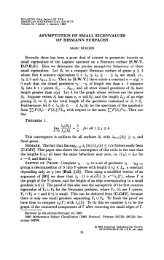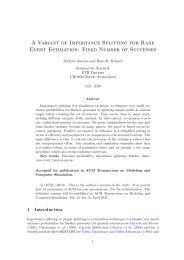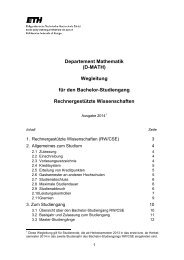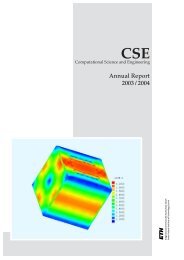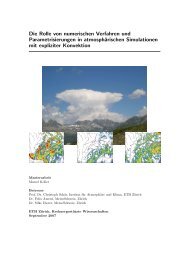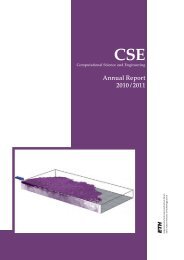A 2D Finite Volume Non-hydrostatic Atmospheric Model ...
A 2D Finite Volume Non-hydrostatic Atmospheric Model ...
A 2D Finite Volume Non-hydrostatic Atmospheric Model ...
Create successful ePaper yourself
Turn your PDF publications into a flip-book with our unique Google optimized e-Paper software.
AbstractOn small scales terrain-following coordinates lead to strongly deformed grids, computational errorsand even numerical instability when following a steep and/or abruptly changing surface. An alternativeapproach is to use height as a vertical coordinate. This then leads to terrain-intersecting coordinatesurfaces and a lower boundary consisting of cut cells. The main aim of the present work is tocompare these two approaches. To this end we implement a cut-cell lower boundary into an existingfinite volume model. Several additional improvements are made to the model. We add a Rayleighsponge layer at the top of the domain, implement computational and physical mixing and correct theimplemented divergence damping. For an accurate calculation of the vertical acceleration the originalwell-balanced finite volume model requires the evaluation of a <strong>hydrostatic</strong> background state atevery time step. It was found that a less frequent update of the <strong>hydrostatic</strong> background state leads toidentical simulation results, but with the benefit of an increase in performance of more than 90%.Several tests were undertaken with the improved model including the simulation of internal gravitywaves triggered by flow past mountains, the nonlinear development of a negative buoyant thermalbubble and an atmosphere at rest over steep topography. The results obtained with the new modelagree well with the reference solutions of these problems.


